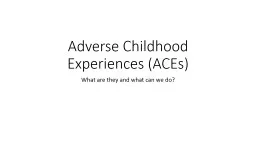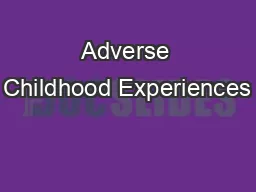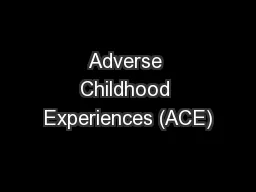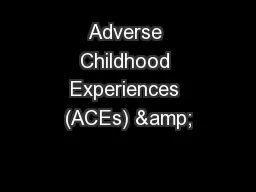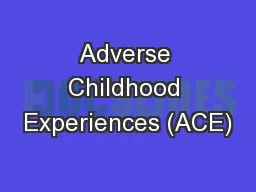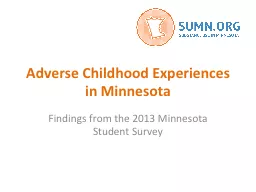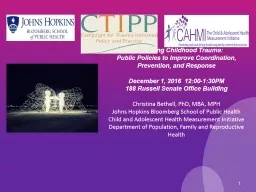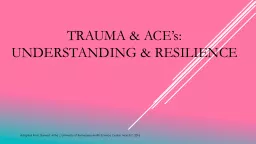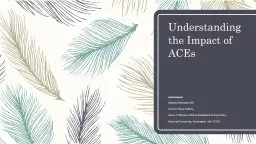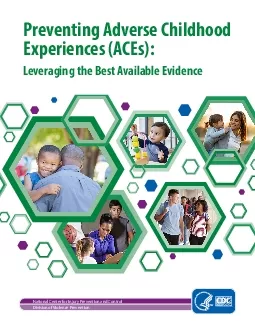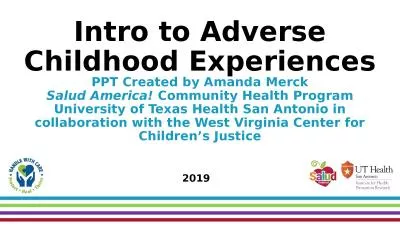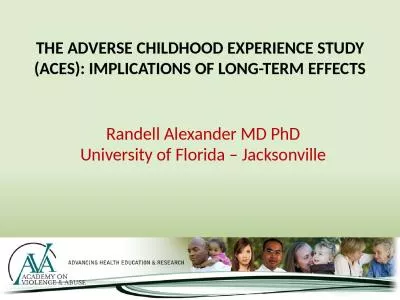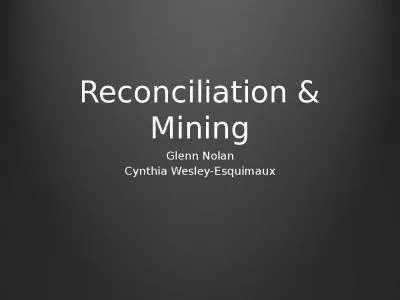PPT-Adverse Childhood Experiences (ACEs)
Author : stefany-barnette | Published Date : 2019-11-07
Adverse Childhood Experiences ACEs What are they and what can we do Objectives Describe the physical and mental health consequences of ACEs Discuss the use of the
Presentation Embed Code
Download Presentation
Download Presentation The PPT/PDF document "Adverse Childhood Experiences (ACEs)" is the property of its rightful owner. Permission is granted to download and print the materials on this website for personal, non-commercial use only, and to display it on your personal computer provided you do not modify the materials and that you retain all copyright notices contained in the materials. By downloading content from our website, you accept the terms of this agreement.
Adverse Childhood Experiences (ACEs): Transcript
Download Rules Of Document
"Adverse Childhood Experiences (ACEs)"The content belongs to its owner. You may download and print it for personal use, without modification, and keep all copyright notices. By downloading, you agree to these terms.
Related Documents

